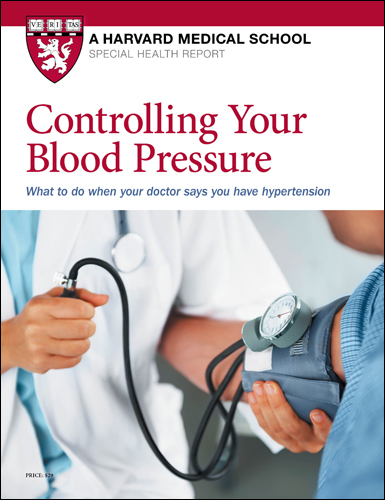What is the ideal blood pressure number?
On call

Q. I take medication for hypertension and monitor my own blood pressure. But it seems what is considered normal keeps changing. What numbers do you advise?
A. The most recent guidelines use a reading of less than 120/80 mm Hg as normal (see below). But that is not some magical number to guide what an individual person should strive for. Instead, it's best to consider the right range of blood pressure that best fits your personal circumstances, with a general goal of striving for lowest acceptable top and bottom numbers.
So the big question is: What is acceptable? No one size fits all. It depends upon many factors, including the presence of other chronic conditions, such as heart disease or kidney disease. For example, if you have coronary artery disease, you don't want your diastolic pressure (the bottom number) to be less than 50 to 55 mm Hg.
|
Blood pressure categories |
|||
|
Blood pressure category |
Systolic mm Hg (upper number) |
|
Diastolic mm Hg (lower number) |
|
Normal |
Less than 120 |
and |
Less than 80 |
|
Elevated |
120 – 129 |
and |
Less than 80 |
|
High blood pressure (hypertension) Stage 1 |
130 – 139 |
or |
80 – 89 |
|
High blood pressure (hypertension) Stage 2 |
140 or higher |
or |
90 or higher |
|
Hypertensive crisis (consult your doctor immediately) |
Higher than 180 |
and/or |
Higher than 120 |
Other factors that affect what you and your doctor choose as your personal blood pressure goal include your age, overall health, and whether you experience side effects from medication. Because most studies have correlated adverse outcomes with a high systolic pressure (the top number), your focus more likely will be on this number.
An overarching goal is to maintain a systolic pressure from 110 to 119 mm Hg, as long as you feel fine and don't get lightheaded when standing. As people age, they often become more sensitive to the drop in blood pressure that occurs when they stand or sit upright. For some people, that might mean accepting a higher systolic reading to avoid faints and falls. Even if your systolic blood pressure runs around 120 mm Hg, trying to lower it even a bit can make a difference in your risk of a major cardiovascular event.
In a recent study, researchers found that lowering systolic blood pressure by 5 mm Hg reduced the risk of a heart attack, stroke, or death from heart failure by about 10%. Aiming for a lower blood pressure does not necessarily mean you need more medication. Lifestyle changes like exercising, eating plant-based foods rich in potassium and calcium, and losing extra pounds if you are overweight can help lower your number.
Image: © JADEZMITH /Getty Images
About the Author

Howard E. LeWine, MD, Chief Medical Editor, Harvard Health Publishing; Editorial Advisory Board Member, Harvard Health Publishing
Disclaimer:
As a service to our readers, Harvard Health Publishing provides access to our library of archived content. Please note the date of last review or update on all articles.
No content on this site, regardless of date, should ever be used as a substitute for direct medical advice from your doctor or other qualified clinician.
















